The New Castelli Premio Black Bib Is One of the Best You Can Buy Right Now
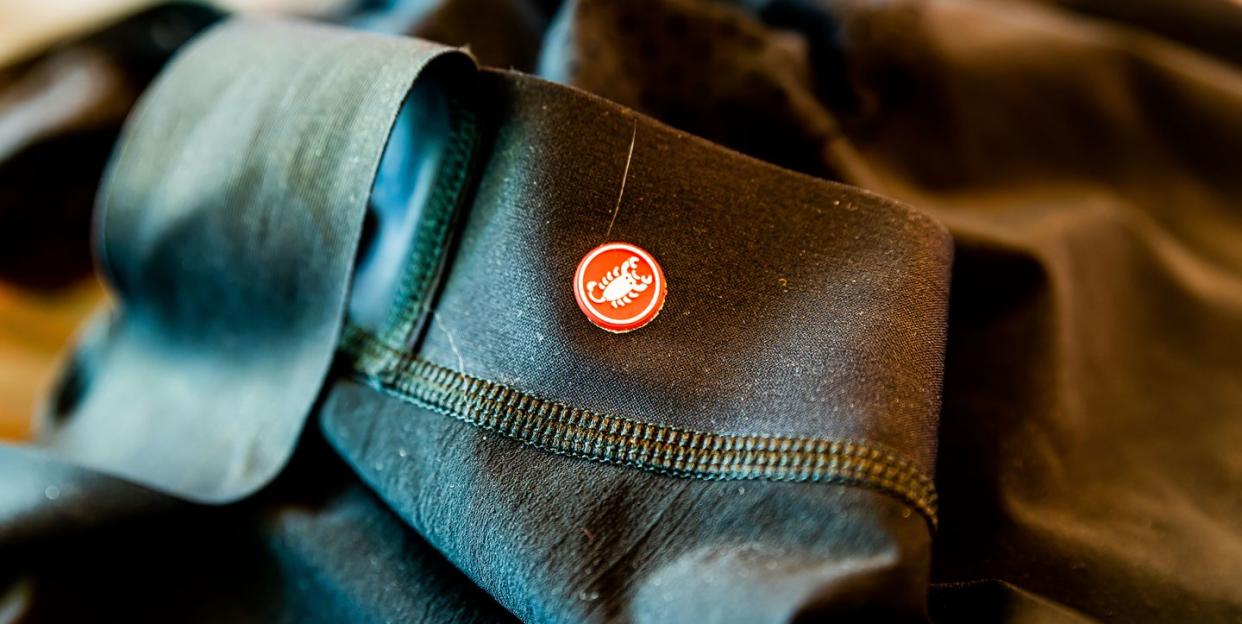
“Hearst Magazines and Verizon Media may earn commission or revenue on some items through the links below.”
The Takeaway: A superb pair of bib shorts and, for an ultra-high-end short, a surprising value
Shorts made of woven textile
Integrated privacy panel to block crack views
Raw-edge leg openings with silicone-free grippers
Men’s and women’s versions
Price: $260
Buy Men’s Now Buy Women’s Now Learn More
I could live in the Premio Black, Castelli's new top-of-the-line short—with one minor modification, which I’ll describe below.
They’re the best Castelli bibs I’ve ever worn and, along with the Rapha Powerweave and the Giordana NX-G, the best and most comfortable bibs I’ve worn in over 25 years of equipment testing. Interestingly, all three of these shorts use woven, not knit, textiles.
Below you'll find a dive into the materials and construction, as well as a review. I’ll tell you what I like about these shorts from my perspective and try to give you a sense of my overall preferences so, hopefully, you can decide if they’ll work for you.
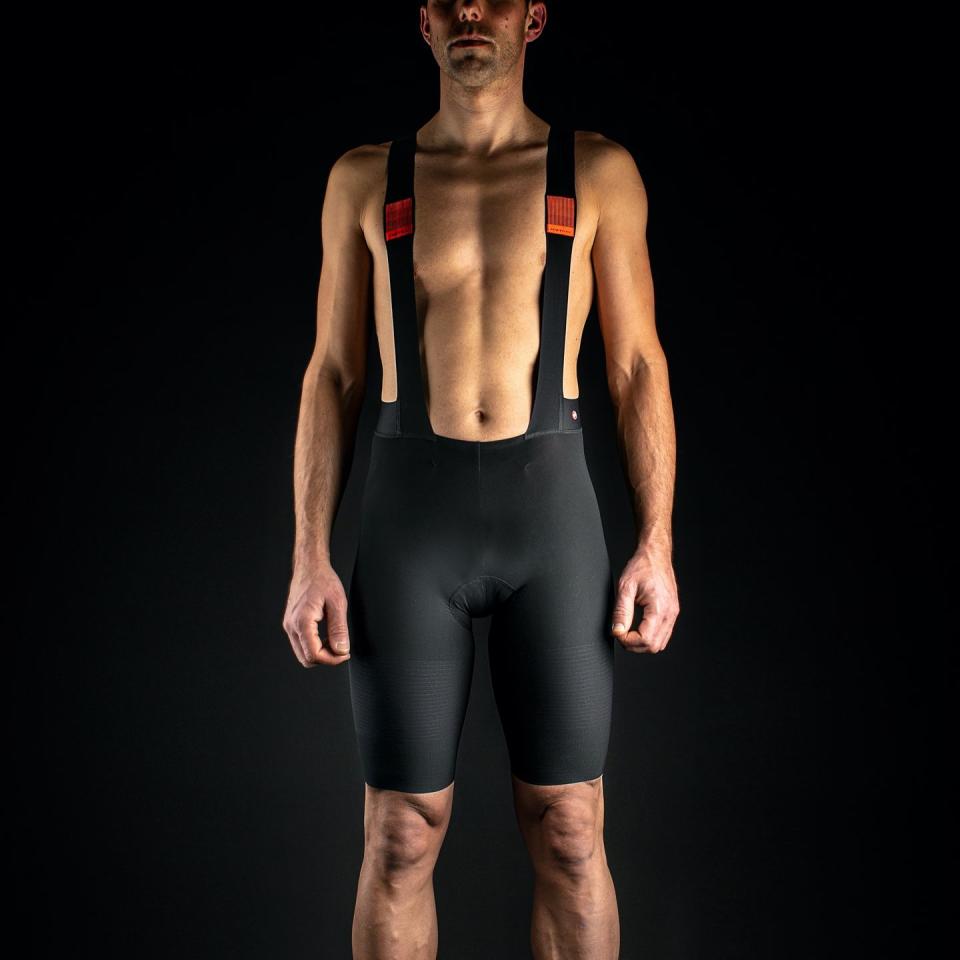
What Is Castelli Premio Black?
The Premio Black is Castelli’s new top-of-the-line bib. In a sign of the times, Castelli felt they needed to say this in the press pack, “About a month after we confirmed the name, the racial protests broke out in the US, UK, and France. There’s no racial intent in the name. It’s a black-label exclusive product with tone-on-tone black logos. We just had to get this out there in case any journalists try to read something into it.”
You can trace the PB’s lineage back to the 2009 launch of Castelli’s Body Paint bib. The Body Paint was a rethink of bib construction: Instead of eight or 10 panels (back in the day, more panels indicated a higher quality and better-fitting short), Castelli used a single piece of fabric for the shorts (the lower part, not counting the straps). “Less is more. Lots more,” said the Body Paint’s ad copy.
The Body Paint was well received despite its shocking, for the time, price ($250, about the same price as the new Premio Black). But, like any product, it had issues, which Castelli’s brand manager Steve Smith outlined to me in an email. “We weren’t able to get the gripper sufficiently grippy," he said. “The fabric was a little bit thin and transparent when stretched to the limit, and it just didn’t quite look the part, so sales weren’t where we wanted them to be. We continued to try to improve the fabric with the German fabric producer, but instead of improving it over the next couple of generations, the fabric just got heavier and hotter. Eventually, we put Body Paint to bed but resurrected the idea with the new fabric possibilities.”
Castelli says it wasn’t until now that the technology became available to realize the Body Paint’s vision entirely.
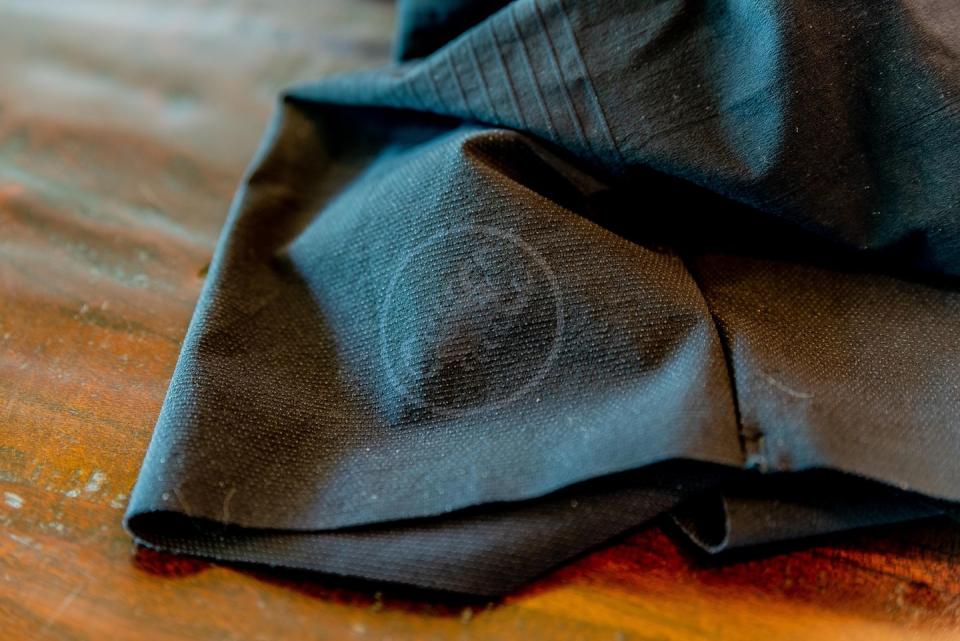
The Castelli Premio Black’s Materials and Construction
Like it did with the Body Paint, Castelli touts that the Premio Black employs a less-is-more philosophy. However, the Premio Black’s less is more than the Body Paint’s less.
“The Premio Black isn’t a single piece, partly because we could make it fit better with a center seam and partly because we had to make that back panel because this fabric also becomes transparent when stretched to the limit,” said Smith. “The fabric is strange because, under normal stretch, it covers very well, then when it comes to its limit, it becomes very transparent. Had some embarrassing rides before we figured that one out! But with that very wispy liner in the back panel, we get rid of the transparency issue, and you don’t even feel it. In the end, I don’t feel the seams, so to me, it seems we’ve resurrected the spirit of what we wanted Body Paint to be.”
In the end, Castelli makes the shorts part of the Premio Black from four pieces—two large leg panels, a back panel, and a second privacy layer behind the back panel, so no one has to see your crack.
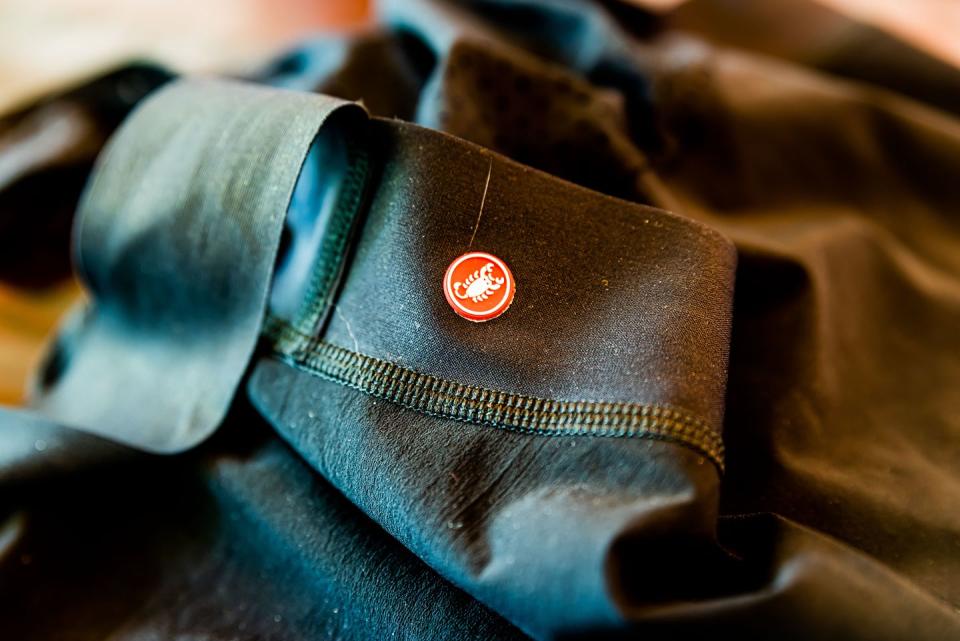
Castelli uses a woven textile with 35 percent Lycra to make the three main panels of the shorts. A woven textile is denser than a knit so that it can be thinner. This, Castelli claims, makes it less bulky and helps it stay drier because moisture evaporates quicker. It’s also more durable, the company claims. The weave varies depending on the location: it’s thicker at the hips for compression and to anchor the chamois and thinner at the thigh for breathability.
The leg openings are raw cut—a single layer of material with no seams or add-ons—with seven centimeters of gripper for men and six centimeters for women. Interestingly, the gripper is not silicone but rather “a specific weave that brings the Lycra fiber to the inner surface.”
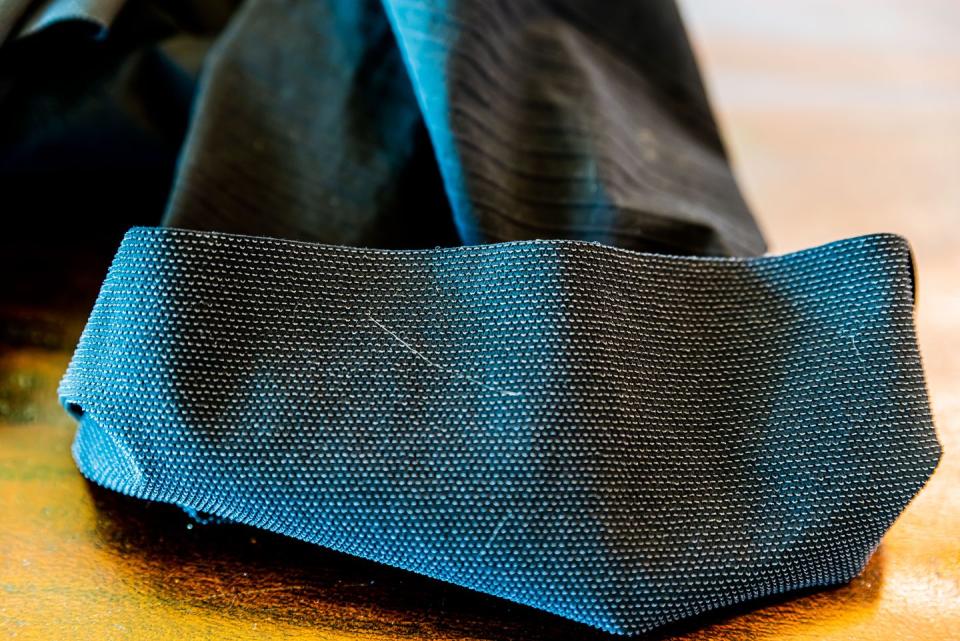
The bib straps are a thin, single layer of material with raw-cut edges. Stitched and bonded to each strap is a label that helps prevent the strap from bunching and folding, Castelli says. Castelli also uses bib strap material for a strip just above each hip, and there’s a perforated bib panel with bonded borders.
The chamois/pad is the same Progetto X2 Air Seamless pad found in Castelli’s other high-end shorts. It’s a multi-layer, multi-material, multi-thickness pad with three-millimeter gel pads under the sit bones and taint perineum. The gel doesn’t breathe—that’s bad because it makes shorts hot and leads to saddle sores—so Castelli uses trillium gel pads to encourage airflow.
Branding is minimal: just a tiny rubber dot on one hip and barely visible laser-etching on the butt and legs.
The Castelli Premio Black’s Sizing
The Premio Black for men comes in bib form only and sizes small through triple extra-large.
The women’s Premio Black bib comes in extra-small through extra-large. There’s also a shorts version for women in extra small through extra-large.
This is a race-fit short from an Italian brand, so it does fit on the smaller side. However, I found the fabric has a lot of stretch and is forgiving, so I’d caution against the urge to size up.
One thing I’ve consistently heard from cycling bib/short makers is that the most common cycling apparel sizing mistake riders make is wearing their shorts/bibs too big. You’re not buying jeans: Cycling bibs should fit quite snugly.
You don’t want obvious pinching or constriction, but you should feel a decent amount of compression: They should be slightly difficult to pull on and initially feel almost too tight. Basically, when you pull on a set of bib shorts, your first thought shouldn’t be, “Wow, these are cozy,” it should be, “Whoo, I need to cut back on the doughnuts/beer/wine/cheese.”
A properly tight fit keeps the chamois in the right place and prevents it from moving around, which can cause saddle sores. And like most stretch materials, the Premio Black does relax slightly after you pull them on and bring the fabric up to body temperature.
Castelli Premio Black—Ride impressions
Let’s start with my stats: I’m 173cm (a bit over 5-foot-8) tall and weigh about 81 kg (179 pounds)—much larger than I want to be. I wore a size medium, and I loved how it fit: properly snug but not overly tight. However, I prefer it when my bibs fit snugly (correctly, I’d argue). Plus, the Premio Black is stretchier and more forgiving than other Castelli shorts I’ve worn recently, so I think that it fits truer to (American) size than the brand’s other shorts.
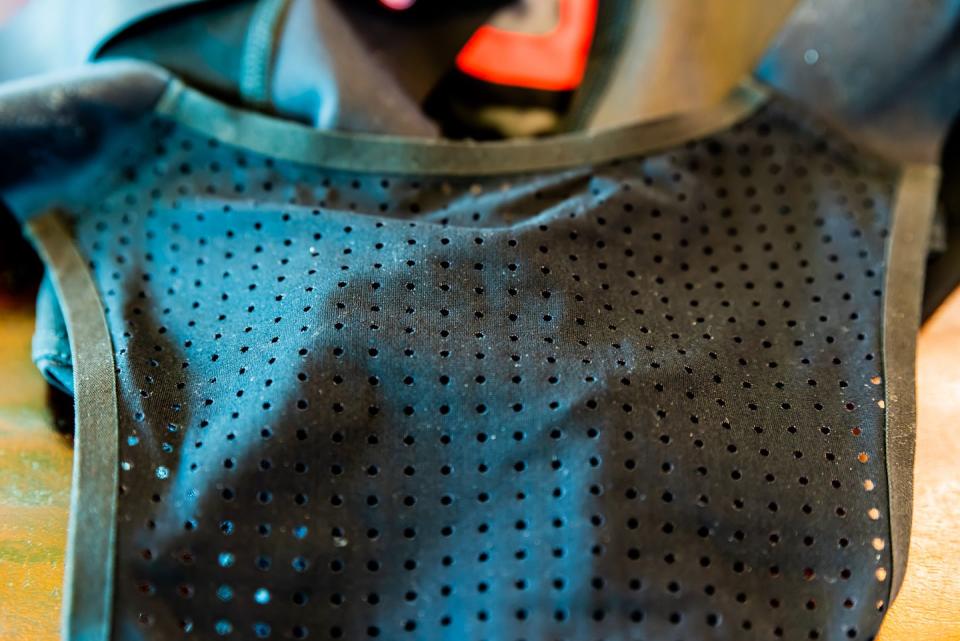
The bib straps felt a touch short when I was standing up, but as soon as I got on the bike and reached for the bar, the length felt right. They kept the shorts up and in place without cutting into my shoulders and maintained their support even when soaked through with sweat.
And here’s where I’ll raise my only complaint about these shorts (the one modification I wished for at the beginning of this review). The reinforcing labels on the straps have hard edges and pokey corners that dug into me as I rode. If I wore a short-sleeve base layer, the edges and corners of the labels were less noticeable, but I typically skip the base layer in warm and hot weather.
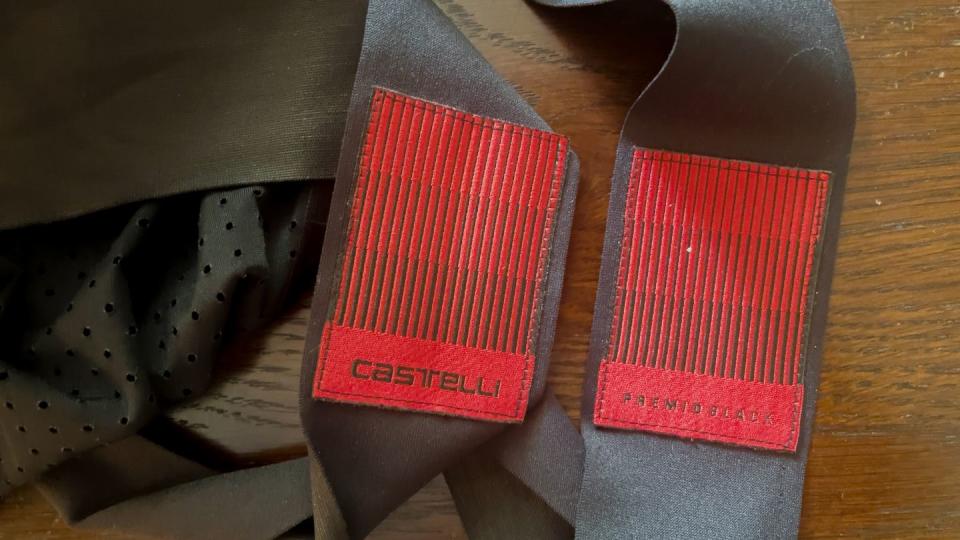
The labels annoyed me enough that I eventually—and carefully—removed them. Without the labels, the straps were much more comfortable but also more prone to folding and rolling. The best solution I found was to start riding and reach into my jersey to flatten the strap. That seemed to keep it flat for a while, but I would need to occasionally reposition the strap to flatten it again. The straps were still quite comfortable even when they rolled or bunched, so removing the labels was a net gain for my comfort. Still, I am curious to hear what sort of feedback Castelli gets about the labels once the Premio Black gets out to the public.
Overall, the fit and feel of this bib is similar to other woven shorts I’ve tried: snug with impressively even compression around my thighs and glutes and a smooth and cooling feel against my skin. I felt no tugging or restriction in movement while on the bike. The leg openings are very nice: I hardly noticed the edge of the short on my quad, and the grippers gripped without pulling out my leg hairs or irritating my skin.
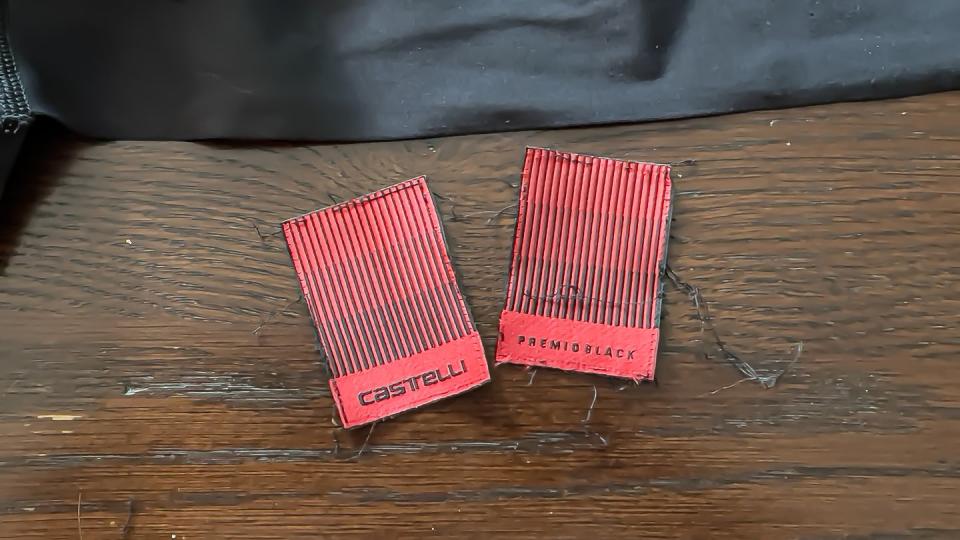
Like other Castelli shorts, the Premio Black is cut a bit lower than most in the front. If you’re rocking a shredded six-pack, this will not be an issue, but if you’re soft around the middle like me, you may feel a bit of tummy spilling over the top. I found it more of an aesthetic embarrassment than a comfort issue and a non-problem while bent over the bar and riding.
I didn’t feel any seams or edges (other than the bib reinforcements) and no hot spots even after sweaty multi-hour rides. They’re so thin and light they feel almost painted on yet are reassuringly sturdy and supportive. And damn, do they breathe well and dry impressively fast. The short’s material is so thin and supple that I felt no bunching or folding around the hips or groin area when in the drops and pedaling.
A couple of notes before I get into the pad: I prefer a thinner, firmer chamois to a thick and plush one. And I try to avoid chamois cream whenever possible—I think it feels gross and seems to cause me more saddle sores than it prevents.
With that out of the way, the Premio Black has a good chamois pad. It’s a little stiff at first, but after a few rides and a few washes, it broke in and conformed to my undercarriage contours very well but didn’t fold and jam its way into my various chasms. It provides good support and even pressure distribution but, crucially, it’s not too big or too spongy, and the gel pads don’t squish around. It stays cool and dry too, which is always a good thing.
Basically, the pad is exactly as comfortable and protective as it should be, but mainly it’s not bulky, intrusive, or annoying. That’s rarer than it should be, sadly.

Turning to price: At $260, these are unquestionably high-end. However, they are much less expensive than the Giordana NX-G ($385), Rapha Powerweave ($375), Assos Equipe RSR S9 ($380), and the Q36.5 Unique Bib ($436). I never imagined myself saying this, but apparently, Castelli is the value leader in ultra-high-end shorts.
Overall, I think the Premio Black is a nearly perfect bib short. It’s light, thin, supportive, quick-drying, and very comfortable with an effective chamois pad. It’s one of the best bibs you can buy right now.
You Might Also Like

